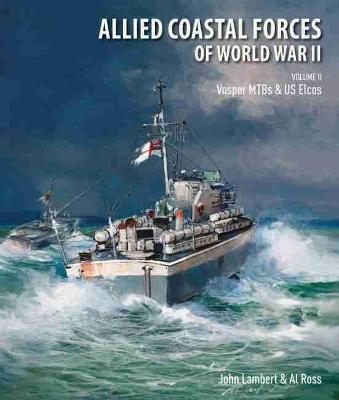Combat History of German Tiger Tank Battalion 503 in World War 2
by Richard Freiherr Von Rosen, Alfred Rubbel, and Franz-Wilhelm Lochmann
This book tells, with firsthand accounts as well as numerous, never-seen-before photographs, the combat history of German Tiger Tank Battalion 503, the senior Tiger battalion of the German Army, equipped with both the Tiger I and the King Tiger. The battalion saw action in the attempted relief of Stalingrad, the tremendous tank engagements at Kursk, and the bitter fighting to relieve German units encircled at the Tscherkassy Pocket. It then defended against the Allies in Normandy in 1944, and en...
Allied Coastal Forces of World War II (Allied Coastal Forces of World War II, #2)
by John Lambert and Al Ross
Allied Coastal Forces, now a recognized classic work first published in 1990, remains the only publication to deal comprehensively--in words, photographs, and drawings--with the technical detail of motor torpedo boats, PT boats, motor gunboats, launches, and submarine chasers. This second volume covers sixteen Vosper MTB designs and the US 70ft, 77ft and 80ft ELCO designs.
This is a study of the period 1939-45, when the British government, through the Ministry of Information, disseminated propaganda among European neutrals, whose behaviour in relation to the belligerents could materially effect the outcome of the war, and could not be left to chance, or the efforts of diplomats alone. Working against Axis competition, British Foreign Office mistrust, the neutral's suspiciousness and their own frequent ineptitude, the propagandists waged a long and bitter war of wo...
With victory in North Africa complete, the Allies had a choice. The Americans wanted an early cross channel attack from Britain on North West Europe. Churchill favoured invading the soft under-belly of Italy to weaken the Axis forces and gain Italian surrender. With Eisenhowers army and battle-hardened Eighth Army in North Africa, Churchill prevailed. The ambitious Operation HUSKY required meticulous planning. Montgomerys Eighth Army and Pattons Seventh landed successfully although the air...
By October, 1944, the U.S. Navy submarine Tang was legendary-she had sunk more enemy ships, rescued more downed airmen, and pulled off more daring surface attacks than any other Allied submarine in the Pacific. And then, on her fifth patrol, tragedy struck-the Tang was hit by one of her own faulty torpedoes. The survivors of the explosion struggled to stay alive in their submerged "iron coffin" one hundred-eighty feet beneath the surface. While the Japanese dropped deadly depth charges, just nin...
D-Day, 6 June 1944, the day on which the Allies landed on the beaches of Normandy with the intention of reclaiming mainland Europe from German occupation. The significance of the operation has captured the collective imagination to become the defining moment of World War Two and represents the ending to the struggles of the early twentieth century. D-Day in Numbers sets the scene for the largest seaborne invasion of all time. It covers the mammoth preparations for the landings, their savage, awe...
Fighting the Russians in Winter
by Allen F Chew, Howard F. Stone, and Combat Studies Institute
Nazi Gold: the Full Story of the Fifty-Year Swiss-Nazi Conspiracy to Steal
by Tom Bower
O Ex rcito Brit nico Durante a Segunda Guerra Mundial
by Charles River Editors
When Japanese signals were decoded at Bletchley Park, who translated them into English? When Japanese soldiers were taken as prisoners of war, who interrogated them? When Japanese maps and plans were captured on the battlefield, who deciphered them for Britain? When Great Britain found itself at war with Japan in December 1941, there was a linguistic battle to be fought--but Britain was hopelessly unprepared. Eavesdropping on the Emperor traces the men and women with a talent for languages wh...




















